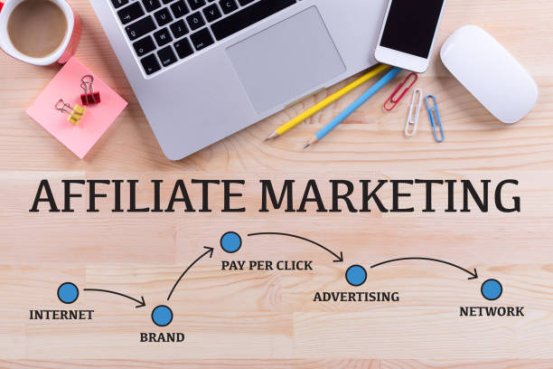Master Affiliate Marketing with an Effective PR Campaign
Affiliate marketing PR combines affiliate partnerships with strategic media outreach to help UK businesses increase visibility, boost sales, and strengthen their digital presence.
Affiliate marketing PR combines affiliate partnerships with strategic media outreach to help UK businesses increase visibility, boost sales, and strengthen their digital presence.

Understanding the Concept of Affiliate Marketing PR
Affiliate marketing PR merges the measurable, results-driven approach of affiliate marketing with the reputation-building power of public relations. In affiliate marketing, companies work with affiliates—individuals or organisations who promote products or services in exchange for commissions on sales or leads. This approach provides a cost-effective way to expand reach while achieving clear, trackable results.
Public relations focuses on shaping a positive brand image, earning media coverage, and building trust with audiences through compelling storytelling. When combined with affiliate marketing, PR amplifies campaign impact. For example, while affiliates promote a product launch to their followers, PR secures media features and influencer mentions, reinforcing credibility and extending audience reach.
Key Elements of Affiliate Marketing PR
1. Recruiting Affiliates and Building Partnerships
Finding affiliates whose audiences align with the brand is crucial. Potential partners include bloggers, social media influencers, and content creators on TikTok, Instagram, or YouTube. Authentic recommendations from these affiliates resonate with followers and drive engagement. Tools like HubSpot’s free CRM help manage partnerships, track performance, and maintain effective communication.
2. Coordinated Content Creation and PR Alignment
Content quality is central to affiliate marketing PR. Affiliates create blogs, videos, posts, and reviews that reflect the brand’s voice, while PR ensures consistency with broader messaging. For instance, a beauty brand might collaborate with an influencer for a tutorial video while simultaneously pitching the story to fashion magazines, increasing both exposure and credibility.
3. Leveraging Paid Media
Digital advertising, including PPC or display campaigns, can amplify affiliate content and drive traffic to campaign landing pages. Partnering with agencies ensures cost-effective, data-driven campaigns. Combining paid media with affiliate and PR efforts creates a robust growth engine.
4. SEO for Sustainable Visibility
Search engine optimisation is essential for long-term campaign success. Affiliates applying SEO best practices—keyword targeting, backlinks, and content optimisation—can maintain organic traffic. Working with an SEO agency ensures comprehensive and competitive optimisation strategies.
5. AI-Powered Optimization
AI tools are increasingly used to enhance affiliate marketing PR campaigns. They can predict purchasing behaviour, evaluate affiliate performance, automate content personalisation, and streamline outreach. Platforms like HubSpot AI help brands optimise targeting and scale campaigns effectively.
Benefits of Affiliate Marketing PR
1. Wider Reach
Combining affiliate networks with media coverage allows brands to access larger, more targeted audiences. A fashion label promoted by a TikTok influencer and featured in a leading online magazine benefits from both reach and reinforced credibility.
2. Cost Efficiency
Since affiliates are paid only for measurable outcomes, this strategy reduces financial risk compared to traditional advertising. SMEs can achieve marketing results without significant upfront investment, while PR coverage provides additional earned media and organic engagement.
3. Trust and Authority
Endorsements from trusted voices increase credibility. Affiliates bring authentic engagement, while PR ensures visibility in respected publications. For example, a tech company might gain credibility from both a reviewer partnership and media features in industry outlets.
4. Precise Audience Targeting
Affiliate marketing PR allows brands to reach specific segments—Gen Z on TikTok, professionals on LinkedIn, or niche communities—by selecting affiliates and channels strategically, increasing conversion potential.
Comparing Affiliate Marketing PR with Other Strategies
Strategy | Cost | Effectiveness | Scalability | Best For |
Affiliate Marketing PR | Low–Medium | High for targeted campaigns | High | Visibility & conversions |
PPC Advertising | Medium–High | Immediate traffic | Medium | Short-term growth |
TV/Digital Signage | High | Moderate | Low | Local awareness |
SEO | Low–Medium | Long-term traffic | High | Organic discovery |
Social Media (TikTok) | Medium | High youth engagement | High | Brand interaction |
Source: Statista, HubSpot Reports
Step-by-Step Approach to Building an Affiliate Marketing PR Campaign
1. Define Goals Clearly
Set SMART objectives for sales, traffic, or brand awareness.
2. Understand Your Audience
Analyse demographics, interests, and behaviour to refine messaging, PR channels, and affiliate selection.
3. Select Suitable Affiliates
Work with partners aligned to the brand and use tools to monitor performance efficiently.
4. Provide PR-Friendly Assets
Share press releases, brand kits, visuals, and messaging guides to maintain consistency across media.
5. Use AI Solutions
Automate outreach, enhance targeting, and track metrics in real time to improve efficiency.
6. Evaluate and Adjust
Track metrics such as CTR, conversions, and ROI, and refine the campaign with data-driven insights.
Conclusion
Affiliate marketing PR enables UK brands to merge performance-driven sales with strategic brand-building efforts. By leveraging digital tools, PR expertise, and carefully chosen affiliates, businesses can expand reach, strengthen authority, and achieve sustainable, high-ROI growth.
References
